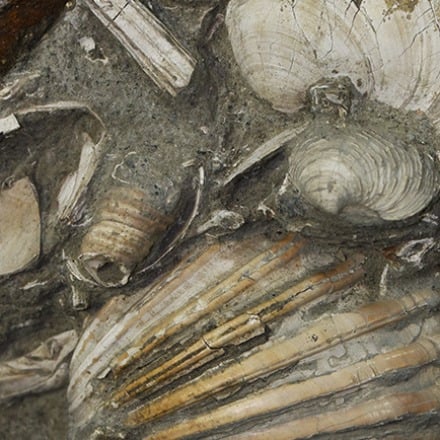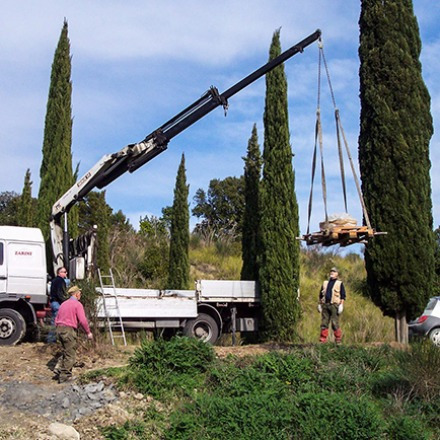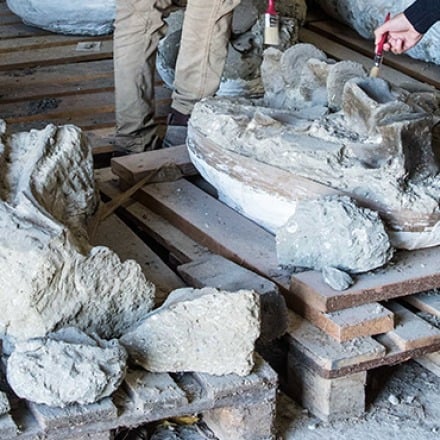

The Brunello vineyards in Montalcino are literally lined with marine fossils. Walking in the cultivated fields and looking at the ravines eroded by wind and rain, you can see the pure white shells that witness the extension of the Pliocene sea. In these places, so beautiful and dear to the collective imagination, as a result, there are shark teeth, large seashells and fragments of wood together with small specimens of microfossils and mollusks. It is in this context that the discovery of "Brunella" is set.

On February 23, 2007, two members of the AVIS Mineralogy and Paleontology Group of Scandicci (GAMPS) discovered a vertebra of the whale in the vicinity the castle of Poggio alle Mura and informed the authorities. Almost immediately a paleontological excavation was set up by GAMPS under the supervision of the University of Florence. In approximately five months, the excavation allowed to extract numerous blocks containing the skeleton of Brunella, weighing several tons, which were deposited inside a warehouse on the Banfi estate, where they still can be found today.

It was only in 2016 that the Superintendence authorized the micro-excavation, restoration, study and promotion activities of Brunella with the development of a Field School, which the Institute of Archeo-Anthropological Studies (ISA) was assigned to organize. Three editions of the field school were carried out between 2016 and 2018.
Finally, in June 2018, by way of the preparation of a complex restoration, study and public outreach project promoted by the Superintendence Archeology, Fine Arts and Landscape for the provinces of Siena, Grosseto and Arezzo, Banfi srl funded (under the government Art Bonus scheme) the micro-excavation, restoration, study and public outreach campaigns of the Brunella Project currently underway. This last phase is presented and discussed on the following websites:
Art Bonus website
MIBACT website
SABAP-Si website